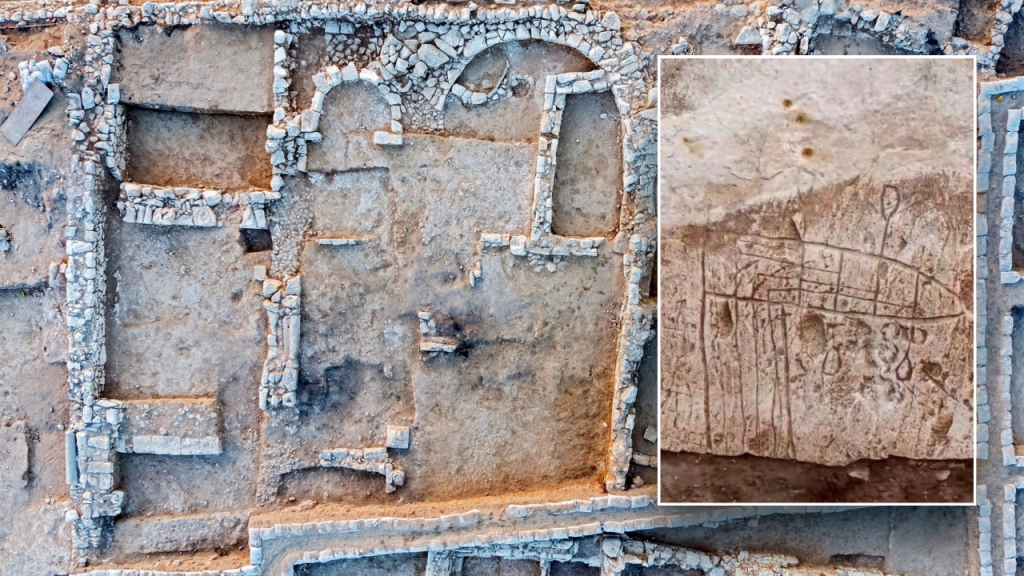Recent archaeological excavations in Israel have uncovered early Christian art dating back around 1,500 years. The art was found in an ancient church in the city of Rahat in the Negev Desert, believed to have been crafted by pilgrims from Gaza during the Byzantine era. The drawings, mostly of boats, were created in the sixth century, marking the early Middle Ages. Experts suggest these drawings may have been made by pilgrims who traveled to the Holy Land, with the ships possibly representing the vessels on which the pilgrims arrived in the area.
The Israel Antiquities Authority announced the discovery of the art on May 23, explaining that pilgrims likely left their mark on the walls of the church as they stopped there before continuing their journey to sites such as Jerusalem and Bethlehem. The significance of ships in Christianity dates back to ancient times, and archaeologists believe that these drawings could provide a unique glimpse into the actual vessels that pilgrims traveled on. The ships depicted in the art appear to have been drawn in a three-dimensional manner, with details such as oars shown on the sides of the vessels.
Historians speculate that the pilgrims who created the art were following Roman roads to the sacred sites of Christendom and that this church could have been a crucial first stop after they disembarked at Gaza port. The discovery of these ship drawings sheds light on the maritime world of the sixth century and provides valuable insights into the lives of Christian pilgrims who visited the Holy Land during this period. The art found in the church near Rahat reveals a connection between the early Christians and their spiritual journey to significant religious sites in the region, such as the monasteries in the Negev Hills and the Sinai Peninsula.
Professor Deborah Cvikel, involved in the analysis of the ship imagery, noted that one of the drawings appeared to depict a ship in a three-dimensional style, with clear details such as a pointed bow and oars on the sides. Similar symbols of ships and crosses left by pilgrims have also been found in other churches, such as Jerusalem’s Holy Sepulchre. The intricate details in the ship drawings indicate that the artist may have been attempting to provide a realistic representation of the vessels used by the pilgrims during their voyage to the Holy Land.
The director of the Israel Antiquities Authority, Eli Escusido, described the discovery as surprising and intriguing, offering a unique glimpse into the maritime world of Christian pilgrims from 1,500 years ago. The find not only showcases the artistic talents of the pilgrims who left their mark on the walls of the church but also provides valuable historical evidence of the ships they traveled in. This discovery serves as a window into the life of early Christians and their pilgrimage to sacred sites in the Holy Land, highlighting the significance of these artistic expressions in understanding the religious and cultural practices of the past.













